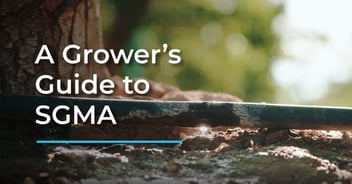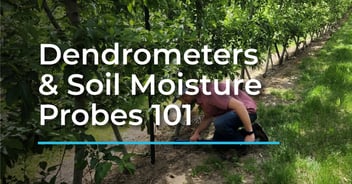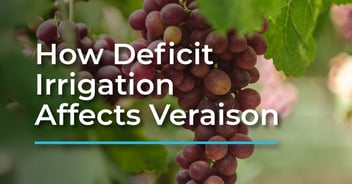In farming, there never is a typical year. But some years stand out more than others.
The spring that growers experienced in California in 2023 is one that will stand out in our memory for a long time. Spring melt and continued flooding is a challenging way to start a new season that follows a record-breaking drought.
The conditions brought on by the wet spring present us with new obstacles and opportunities for crop irrigation that we should keep in mind while planning and executing this season’s crop.
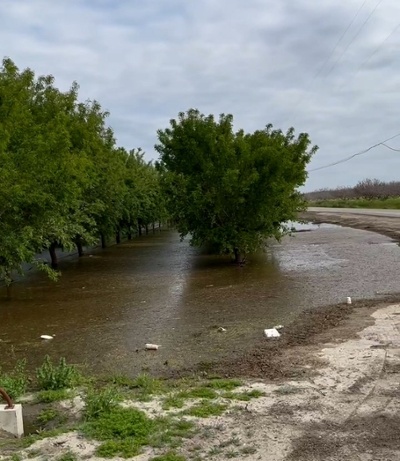
A flooded orchard in California
Flooded Soils
Risks from flooded soil arise from two interacting risks and can impact your crop irrigation:
- Lack of oxygen and;
- Increase in pathogens
Plants produce energy and store it in the form of sugars. Those sugars are transported throughout the plant where they can be used by the portions of the plant that do not produce energy, such as the trunk and roots.
However, sugar cannot be used directly by the cells of the plant. It has to be broken down into a more simple form of energy-bearing molecule called adenosine triphosphate, (ATP).
1. Lack of Oxygen
The process that converts sugar to ATP requires an input of oxygen to convert it. This is why plant roots need oxygen, it is also why it is possible to drown a plant by overwatering it.
Flooded, or overwatered soils limit the amount of oxygen available for this process, which in turn limits the vigor of the plant in those areas. Limited vigor means that the plant cannot grow properly, and cannot fight off plant pathogens that normally would not pose a problem.
2. Increase in Pathogens
Pathogens are the second issue. Not only are plants with limited oxygen more susceptible to disease, but many plant pathogens thrive in anaerobic (low oxygen) environments. Many root diseases first take a foothold when the soil is flooded or even just overly wet.
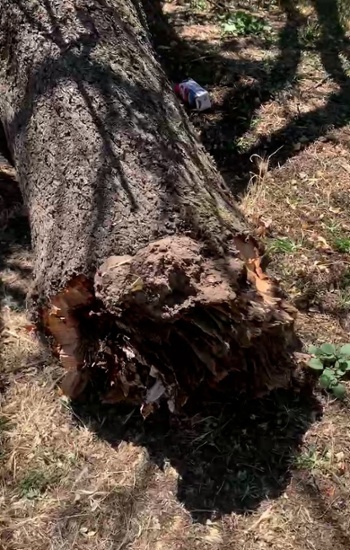
A tree with diseased roots that was blown over during a windstorm
Dormant trees have a very low metabolism rate, so flooded soil during dormancy isn’t a high risk. That’s why many can participate in groundwater regeneration practices during the dormant season, however, after leaves and blooms emerge, trees require plenty of oxygen in the soil in order to be healthy.
Mitigating Disease
Even as soils drain and the weather returns closer to typical, it is possible that disease has begun to take hold in your roots.
The best practice is to allow for good wet/dry cycles that allow your soil to drop to 80% or less soil moisture before irrigating again. This drains much of the soil pores and allows fresh water from irrigation to draw in oxygen with it. This also gives the tree or vine a chance to fight off encroaching diseases.
Very frequent irrigations, such as pulse irrigation can run the risk of keeping the soil too wet and encouraging plant pathogens.
It may require months or years to take its toll, but a sure sign of diseased roots are windfall trees, especially when the fallen trees have no roots attached. Watch this video to learn more:
How to Manage Your Crop When You Have More Water Than Usual
1. Crop Irrigation Is More Important Than Ever
It’s tempting to give less thought to proper crop irrigation when there is plenty of water available.
But drought is bound to return, making it all the more important to make the good years count. On top of that, it costs money to pressurize water, not to mention the cost of the water itself.
When water is applied, it is important to make sure it is needed in order to keep costs low and margins high. Tools that report soil moisture data and aid in scheduling are key to getting the timing right.
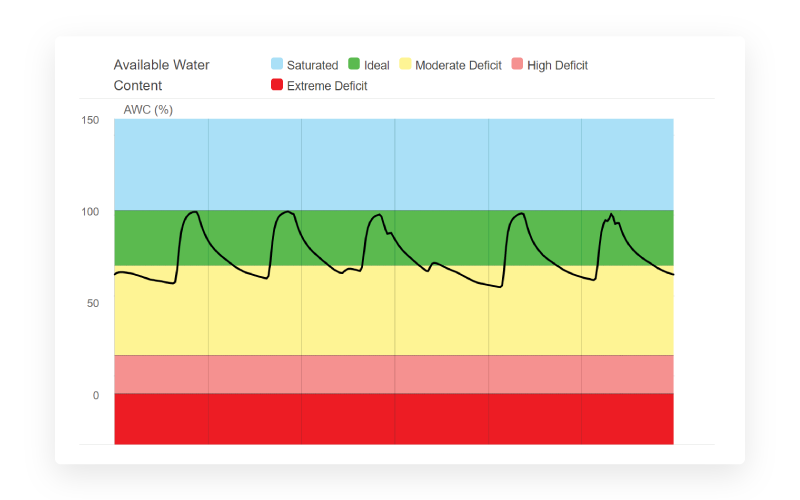
An available water content graph like this one on the Semios crop management platform helps irrigation managers and growers know how much to irrigate to keep their trees in an optimal state.
2. Leaching, the Good and Bad
Most winters, we are lucky to get enough rain to fill up the soil profile. This year, there was so much rain that the profiles were filled and there was extra water to leach salts through the soil and down beyond the reach of the roots.
This is quite an advantage in areas that have soils high in salts. However, it also means that the good salts you put in the soil on purpose likely also leached out.
Potassium and phosphorus don’t move very much in the soil, but nitrogen is very mobile, especially in very wet conditions. Don’t count on the nitrogen you applied in the fall to be there this spring.
Semios’ Salt Map is a helpful tool for tracking salt (such as nitrogen) and seeing where in the profile the salts move so that decisions can be made regarding whether to add more or not.
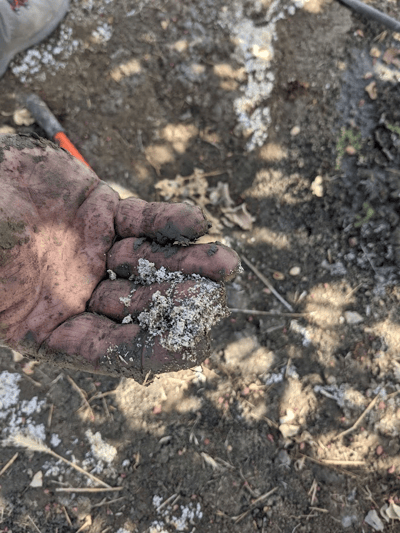
Soil with a lot of salt buildup that's visible on the surface
3. Surface Water Can Lead To Infiltration Issues
Soil conditioners such as gypsum and polymers work by chemically or physically altering the structure of the soil, causing it to be more open and able to accept water. These products only work when they are in the soil. Unfortunately, these conditioners have a limited life and are likely to break down under the influence of so much water or leach out causing water infiltration issues to return.
On top of that, extra water in reservoirs means more surface water will be available for use on your crops. Surface water is low in solutes such as calcium and magnesium that allow for effective infiltration of water into soils. That combined with leaching likely means infiltration problems will be worse than they have been in several years.
Soil moisture sensors can help identify infiltration issues and aid in assessing products that effectively treat the issue.
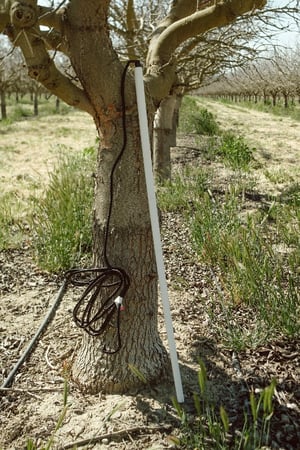
A soil moisture probe before installation by the Semios Field Services Team
After years of drought, most are likely out of practice in terms of irrigating when there is enough water available.
It may be worthwhile to look back on our notes from 7 to 10 years ago to see what we did differently. Some old guidance coupled with lessons learned in the years of drought can help us to be even more successful this year when we once again have water to use.
Related Content:
Semios Water Management Solutions
4 Reasons Your Soil Moisture Probes May Be Giving You Weird Readings
Using Dendrometers and Soil Moisture Probes
Introducing the Semios Wiseconn Integration for Easier, Data-Driven Irrigation Control

